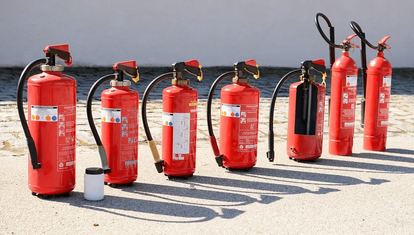pre-employment courses
Fire Extinguisher Safety
The Fire Extinguisher Safety course is designed to educate individuals on the proper handling and use of fire extinguishers, as well as fire prevention measures. This course equips participants with the knowledge and skills to effectively respond to fires and potentially mitigate their impact.
Here are some key components typically covered in a Fire Extinguisher Safety course:
Fire classification: Participants learn about the different classes of fires, including Class A (ordinary combustibles like wood and paper), Class B (flammable liquids and gases), Class C (electrical fires), and Class K (cooking oils and fats). Understanding fire classification is crucial for selecting the appropriate fire extinguisher and extinguishing method.
Fire extinguisher types and operation: The course covers the various types of fire extinguishers, such as water-based, foam, carbon dioxide (CO2), dry chemical, and wet chemical extinguishers. Participants learn about the specific applications and limitations of each type and how to operate them effectively and safely.
PASS technique: Participants are trained in the PASS technique, which stands for Pull the pin, Aim at the base of the fire, Squeeze the handle, and Sweep from side to side. This technique provides a step-by-step approach to using a fire extinguisher and maximizing its effectiveness.
Fire prevention measures: The course emphasizes the importance of fire prevention in the workplace or other environments. Participants learn about common causes of fires, such as electrical hazards, improper storage of flammable materials, and cooking-related incidents. They also receive guidance on preventive measures like regular equipment maintenance, electrical safety, proper storage practices, and fire evacuation plans.
Evacuation procedures: Participants learn about the importance of prompt evacuation in case of a fire that is beyond their control or when their safety is at risk. They are taught how to identify escape routes, sound alarms, and assist others in evacuating safely.
Fire safety equipment and systems: The course may cover additional fire safety equipment and systems, such as fire alarms, sprinkler systems, and emergency lighting. Participants learn about their purpose, operation, and the importance of regular inspections and maintenance.
Hands-on practice: To reinforce the learning, participants typically engage in hands-on practice sessions with fire extinguishers and simulated fire scenarios. This allows them to become familiar with the equipment and gain confidence in their ability to respond effectively in real-life situations.
By completing a Fire Extinguisher Safety course, individuals become better prepared to handle fire incidents and take proactive measures to prevent fires. This knowledge and training contribute to a safer environment and can potentially save lives and property. It is important to note that while the course provides valuable information and practical skills, professional assistance should always be sought for larger or uncontrolled fires.

